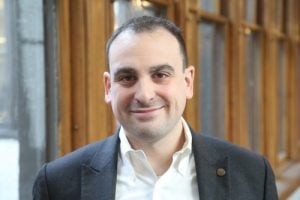The story of the stock market during the Great Recession doesn’t take long to tell. The markets crashed hard, with the S&P 500 dropping by roughly 50% in 2008. The economy continued to suffer through 2009 until a combination of stimulus, tax policy, and old-fashioned hard work served as the defibrillator-like jolt the economy needed to come back to life. By 2013, the market had regained its losses, and it continued trending upward until this year.
Unfortunately, during that 2007-09 bear market, many spooked investors cashed out to wait for more favorable conditions. By the time many felt comfortable investing again, the upswing was in full effect, and the price to re-enter the market was high. Not only had these overly cautious investors lost a huge portion of their starting wealth, they had also missed a crucial part of the recovery and ended up poorer long-term as a result. The average investor sold low and bought high, while those who sold their stock at the trough of the market made out like bandits.
Both these stories are quick to tell and easy to understand. So why does Biglaw seem hell-bent on repeating those same mistakes today?
Turtling Up
Don’t get me wrong, there’s every reason to be skittish right now about our country’s economic prospects. The American economy is woozy and wary, maybe even a little punch drunk. Things haven’t gone as apocalyptically bad as some expected, but it’s still been rough. The other shoe is currently set to drop at the end of this week, when federal unemployment benefits halt, with no extension likely to happen in the short-term. While pharmaceutical companies are making progress on a COVID-19 vaccine faster than any other in history, it’s still unlikely we’ll have one by the end of the year.
When we’re sitting in the middle of a once-in-a-century adverse event like COVID-19, it’s both instinctual and easy to play defense. Cutting costs and eliminating redundancies are evergreen strategies, but they’re especially easy sells in a bear market. Halting capital expenditures and investment in the long-term is par for the course. Many businesses are hoarding cash (sometimes literally — there’s a national shortage of loose change).
More than anything, though, our instinct seems to be to simply freeze in place while we see how things develop. COVID-19 and its uncertainties have caused law firms to massively slow down lateral hiring and mergers. Large infrastructure-building projects are being paused, and expansion efforts are being put on hold. Fear has caused our industry to freeze like a deer in the headlights — which, it must be noted, traditionally doesn’t work out too well for the deer.
Reading The Room
Running a business is about balancing risk and reward. Even in a pandemic, however, the laws of supply and demand remain in effect. There are millions of other actors in the economy making their own risk-reward decisions in real time, and those decisions in the aggregate affect any decision you’re setting out to make. When a horde of investors want a single stock, that stock gets more expensive to buy.
From a management perspective, this means when the competition is putting its resources into playing it “safe,” in many real ways it becomes more costly for you to do the same. You may get more bang for your buck by getting aggressive, since doing so is likely cheaper than usual. Conversely, when the market as a whole is going full bull, safe investments may be underpriced and more worthy of your time. When everyone else is paying a premium to zig, the cost of zagging goes down.
Many, many people lost their homes, livelihoods, and hope in the wake of the collapse of mortgage-backed securities, but a number of savvy investors made big bets, and gargantuan profits, during the uncertainty that followed. Warren Buffett put $5 billion into a battered Goldman Sachs to keep them going in 2008, and made back his investment plus over $3 billion more in profits in just three years. And Buffett was far from the only investor to make major returns off their moves in the scary days following the market collapse. There was money to be made by those with the gumption and foresight to make it. And with the rest of the competition playing defense, the field was wide open for those who were ready to make a play.
While Buffett and Berkshire Hathaway have leverage and cash resources that few of us can emulate, it doesn’t take billions of dollars to turn a recession to your firm’s advantage. It just takes smarts, savvy, and courage.
Bring It Back To Biglaw
So what does this mean for law firms? In my humble opinion, it means now, more than ever, is a time for smart strategic growth. If the rest of the legal market is piling into one investment class, the price of other investments presumably goes down. Smart firm managers can use that to their advantage.
Consider the lateral market, which has largely dried up save for the blue-chip, rain-making, guaranteed-profitability, turn-key practice groups. These unicorns command a hefty premium from firms that want to bring them over, even in the best of markets. In a risk-averse market like the one we’re facing today, the price to bring in a guaranteed rainmaker is as high as it will likely get.
So why buy high? Why spend firm resources on an inflated asset with razor-thin margins when you could instead spread that investment across several underpriced alternatives with bigger upside? Why not instead take a risk by bringing in some younger laterals without mega books but big potential for growth? If no one else is hiring in that market, a savvy firm manager could cherry pick an entire slate of future revenue-generating stars for the price of a single current-day blue chip partner.
Similarly, if the rest of the market is putting a pause on mergers, doesn’t it make sense to consider moving forward on the right kind of deal at full speed? If we’re fearful of a future downturn in the economy, the time to seek out or complete any contemplated merger is now. Get new staff onboarded, get redundancies reduced and efficiencies of scale in place, and be actively stronger as we prepare for the coming bear market. If we sit and wait for conditions to become more favorable, for everyone else to give us permission to be bold, opportunities will pass us by.
To be clear, I’m not saying cash out your firm’s retirement accounts, take them to Vegas, and hope for the best. Investments and risks always must be smart and calculated. I expect few, if any firms will make it through these next few years without feeling at least some pinch. But it’s during times like these that the moves get made that shape the coming decade.
Those who are bold enough to take risks will be the ones to reap the rewards.
 James Goodnow is the CEO and managing partner of NLJ 250 firm Fennemore Craig. At age 36, he became the youngest known chief executive of a large law firm in the U.S. He holds his JD from Harvard Law School and dual business management certificates from MIT. He’s currently attending the Cambridge University Judge Business School (U.K.), where he’s working toward a master’s degree in entrepreneurship. James is the co-author of Motivating Millennials, which hit number one on Amazon in the business management new release category. As a practitioner, he and his colleagues created and run a tech-based plaintiffs’ practice and business model. You can connect with James on Twitter (@JamesGoodnow) or by emailing him at James@JamesGoodnow.com.
James Goodnow is the CEO and managing partner of NLJ 250 firm Fennemore Craig. At age 36, he became the youngest known chief executive of a large law firm in the U.S. He holds his JD from Harvard Law School and dual business management certificates from MIT. He’s currently attending the Cambridge University Judge Business School (U.K.), where he’s working toward a master’s degree in entrepreneurship. James is the co-author of Motivating Millennials, which hit number one on Amazon in the business management new release category. As a practitioner, he and his colleagues created and run a tech-based plaintiffs’ practice and business model. You can connect with James on Twitter (@JamesGoodnow) or by emailing him at James@JamesGoodnow.com.
How do you keep your days apart?
Are Fridays not special anymore?
 Olga V. Mack is the CEO of Parley Pro, a next-generation contract management company that has pioneered online negotiation technology. Olga embraces legal innovation and had dedicated her career to improving and shaping the future of law. She is convinced that the legal profession will emerge even stronger, more resilient, and more inclusive than before by embracing technology. Olga is also an award-winning general counsel, operations professional, startup advisor, public speaker, adjunct professor, and entrepreneur. She founded the Women Serve on Boards movement that advocates for women to participate on corporate boards of Fortune 500 companies. She authored Get on Board: Earning Your Ticket to a Corporate Board Seat and Fundamentals of Smart Contract Security. You can follow Olga on Twitter @olgavmack.
Olga V. Mack is the CEO of Parley Pro, a next-generation contract management company that has pioneered online negotiation technology. Olga embraces legal innovation and had dedicated her career to improving and shaping the future of law. She is convinced that the legal profession will emerge even stronger, more resilient, and more inclusive than before by embracing technology. Olga is also an award-winning general counsel, operations professional, startup advisor, public speaker, adjunct professor, and entrepreneur. She founded the Women Serve on Boards movement that advocates for women to participate on corporate boards of Fortune 500 companies. She authored Get on Board: Earning Your Ticket to a Corporate Board Seat and Fundamentals of Smart Contract Security. You can follow Olga on Twitter @olgavmack.


 James Goodnow
James Goodnow 
 Kathryn Rubino is a Senior Editor at Above the Law, and host of
Kathryn Rubino is a Senior Editor at Above the Law, and host of 












